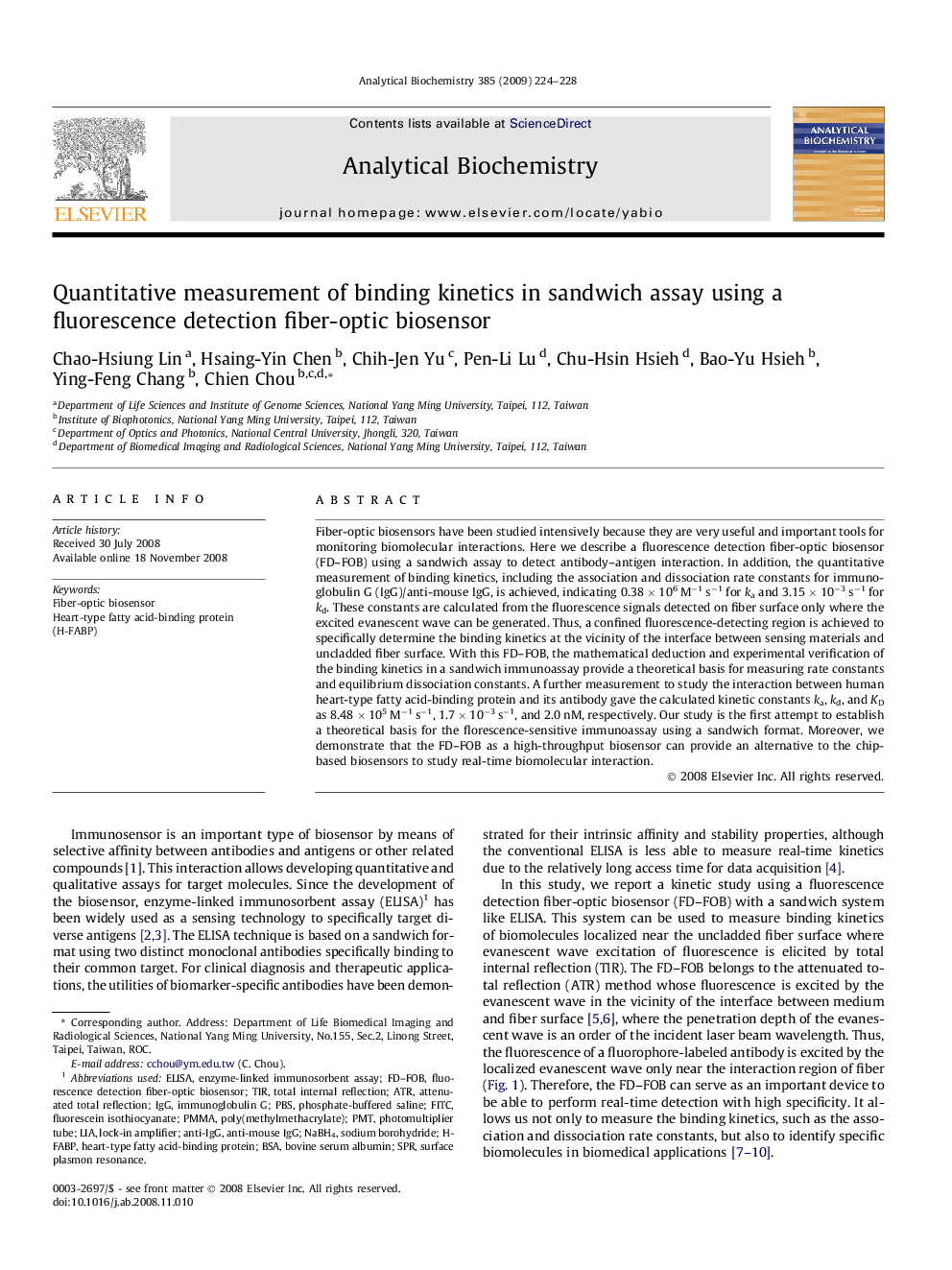| Article ID | Journal | Published Year | Pages | File Type |
|---|---|---|---|---|
| 1175537 | Analytical Biochemistry | 2009 | 5 Pages |
Fiber-optic biosensors have been studied intensively because they are very useful and important tools for monitoring biomolecular interactions. Here we describe a fluorescence detection fiber-optic biosensor (FD–FOB) using a sandwich assay to detect antibody–antigen interaction. In addition, the quantitative measurement of binding kinetics, including the association and dissociation rate constants for immunoglobulin G (IgG)/anti-mouse IgG, is achieved, indicating 0.38 × 106 M−1 s−1 for ka and 3.15 × 10−3 s−1 for kd. These constants are calculated from the fluorescence signals detected on fiber surface only where the excited evanescent wave can be generated. Thus, a confined fluorescence-detecting region is achieved to specifically determine the binding kinetics at the vicinity of the interface between sensing materials and uncladded fiber surface. With this FD–FOB, the mathematical deduction and experimental verification of the binding kinetics in a sandwich immunoassay provide a theoretical basis for measuring rate constants and equilibrium dissociation constants. A further measurement to study the interaction between human heart-type fatty acid-binding protein and its antibody gave the calculated kinetic constants ka, kd, and KD as 8.48 × 105 M−1 s−1, 1.7 × 10−3 s−1, and 2.0 nM, respectively. Our study is the first attempt to establish a theoretical basis for the florescence-sensitive immunoassay using a sandwich format. Moreover, we demonstrate that the FD–FOB as a high-throughput biosensor can provide an alternative to the chip-based biosensors to study real-time biomolecular interaction.
